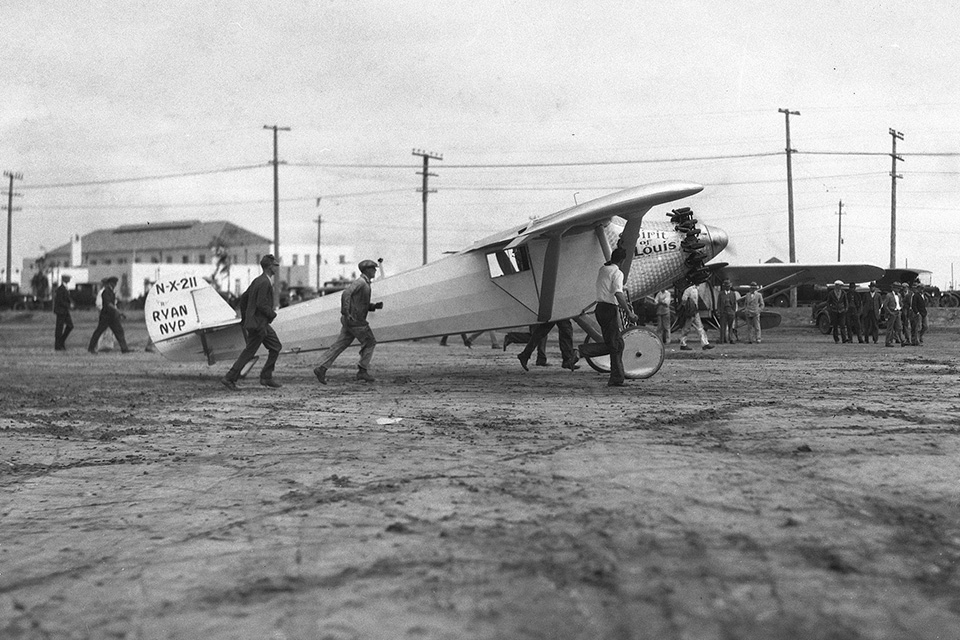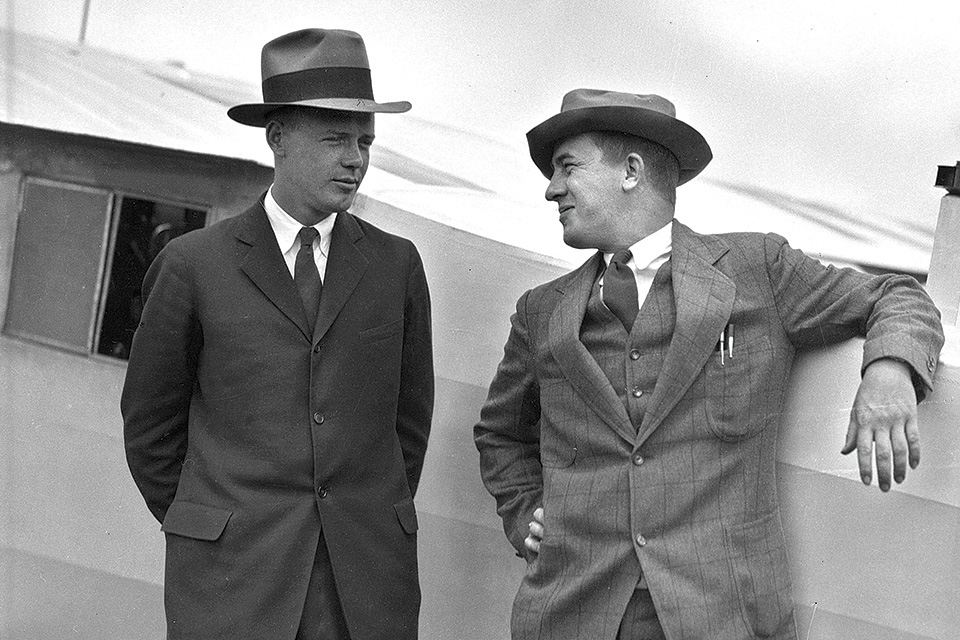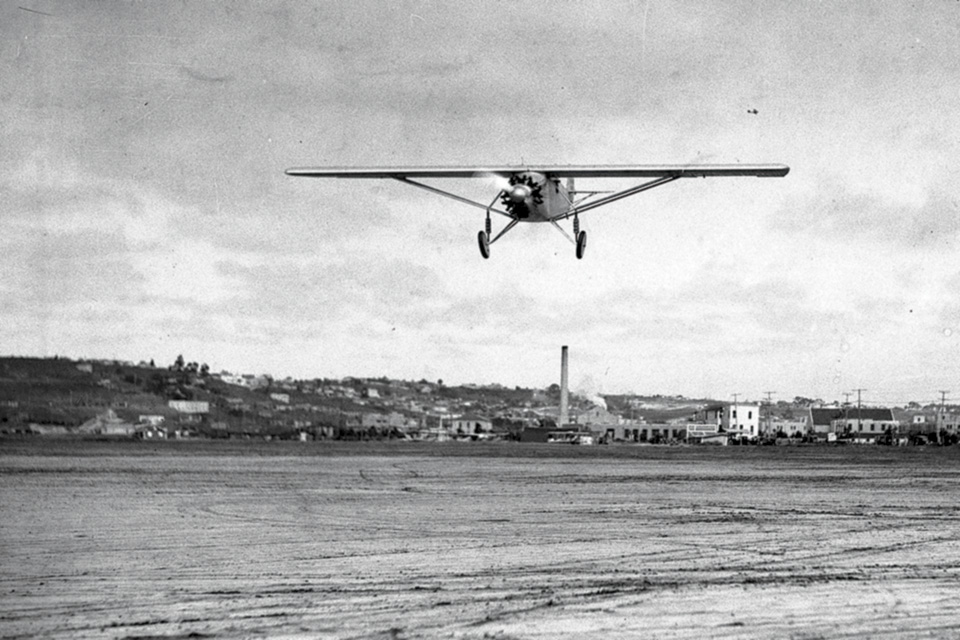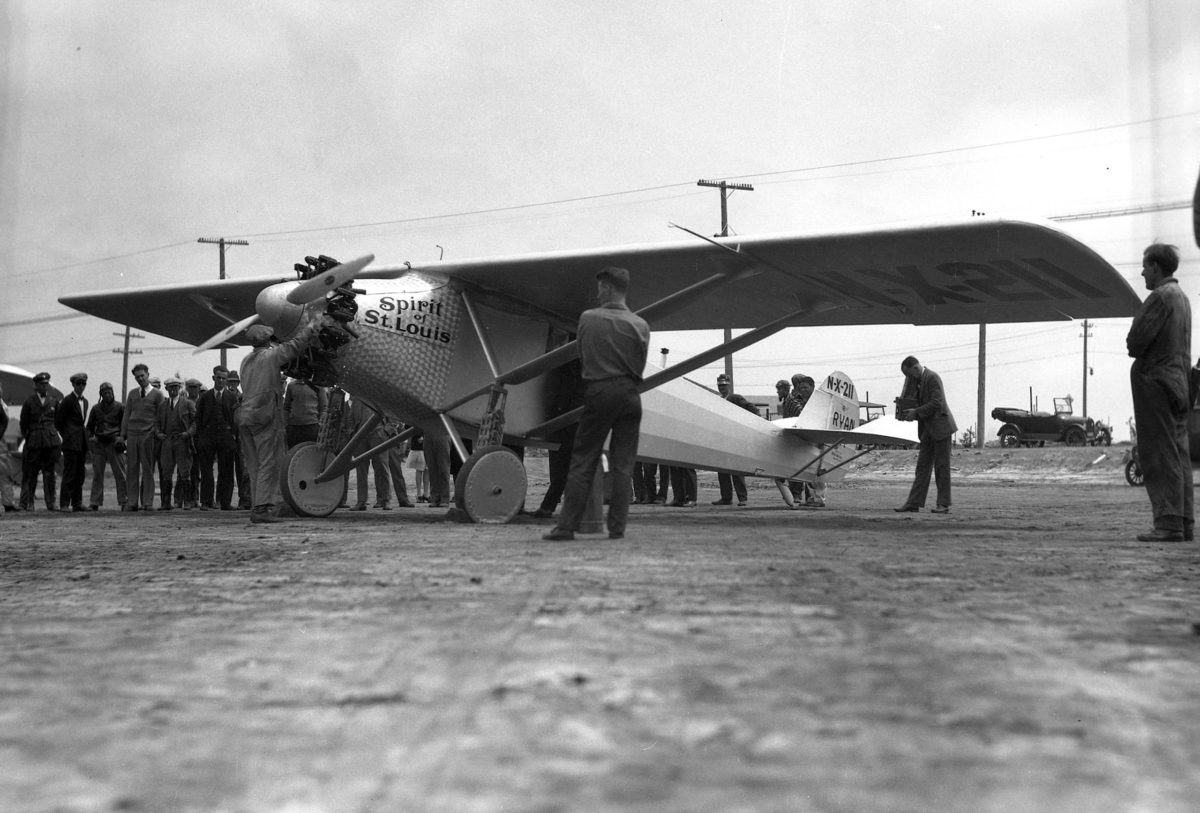“What a beautiful machine it is, resting on the field in front of the hangar, trim and slender, gleaming in its silver coat! All our ideas, all our calculations, all our hopes lie there before me, waiting to undergo the acid test of flight. For me, it seems to contain the whole future of aviation.”
That’s how Charles Lindbergh described the Ryan NYP Spirit of St. Louis as it waited to make its first flight on April 28, 1927, from a dusty San Diego airfield. Three weeks later, the custom-built airplane would carry Lindbergh across the Atlantic Ocean from New York to Paris and into aviation history. But, on this day, he was just an unknown airmail pilot with dreams, daring and an unproven airplane.

Spirit of St. Louis was built by Ryan Aeronautical in downtown San Diego. On the day of its first flight, it was towed by car to a dirt airfield called Dutch Flats, about a mile from the factory. Today, both sites are located in the heart of San Diego, on the edges of the modern airport. The small Ryan factory building still stands, occupied by offices, and Dutch Flats is covered with Spanish-style townhouses and a large post office.
After the first flight, which lasted 20 minutes, Lindbergh piloted Spirit 23 times, testing its flight characteristics, especially when loaded with enough fuel to cross the Atlantic. On May 10, after a total of four hours and 15 minutes of test flying, Lindbergh flew the Ryan to St. Louis to show his investors, and the next day he continued on to New York City. On May 20, he took off from Roosevelt Field for Paris and his date with destiny.
On the day of the first flight, many Ryan employees, who had worked exclusively on the aircraft for the past two months, were there to see their efforts take wing and assist Lindbergh with testing the machine. Also on the field was Harry Bishop, chief photographer for San Diego’s Union and Evening Tribune newspapers.

Spirit’s flight was front-page news in the San Diego papers the next day, accompanied by a photo of the airplane approaching for landing and one of Lindbergh and B.F. Mahoney, president of Ryan. The article quoted Lindbergh as saying the initial flight tests were most satisfactory and the San Diego–built plane exceeded every hope he had placed in it. He would later write that he reached a top speed of 128 mph on that first flight and noted the “Ailerons ride a bit too high” and “The fin needs a slight adjustment,” but that “The response is good enough for a long-range airplane.”
In 2017, 90 years after the transatlantic flight, those images of the first flight came to light again, along with others Bishop shot that day.
While moving the newspaper offices, a San Diego Union-Tribune researcher, Merrie Monteagudo, came across a box of old photos and negatives labeled “Lindbergh negatives.” Inside she found four portraits of Lindbergh and Mahoney taken in March 1927, and an envelope marked “Lindbergh, Charles A., Spirit of St. Louis monoplane, 4-28-27.” Inside were nine photos made on that day of the first flight. Two of them had been published in the newspapers in 1927, but the others had never been seen before. One photo shows a mechanic hand-propping the engine, another shows the plane flying low over the field, but in a steep climb, and others capture people gathered around Spirit after landing.

Monteagudo shared her find with the Smithsonian’s National Air and Space Museum. “It’s really nice to see the airplane when it was brand new,” said F. Robert van der Linden, curator of the museum’s Aeronautics Department. “I see it every day at the museum, and it has all the nicks and bruises you would expect. In the pictures, it’s pristine, literally right off the factory floor. It’s gorgeous, just the way Lindbergh and [Spirit’s designer] Donald Hall wanted it to be.”
Lindbergh returned triumphant to San Diego on September 21, 1927, while making a cross-country tour in Spirit of St. Louis. Harry Bishop was on hand again to take photos of the now world-famous pilot. Lindbergh circled the Ryan plant before landing to visit the men and women who had built his record-breaking airplane, and to endure the inevitable parade, speeches and banquet. Images made by Bishop that day were part of the cache of old photos discovered. Several show Lindbergh speaking at Balboa Stadium to a jam-packed crowd of 60,000 people, the largest gathering in the city’s history to that point.
The following year, voters passed a bond issue to fund a new airport that would be named San Diego Municipal Airport–Lindbergh Field, today’s San Diego International Airport.
This article originally appeared in the January 2020 issue of Aviation History.

